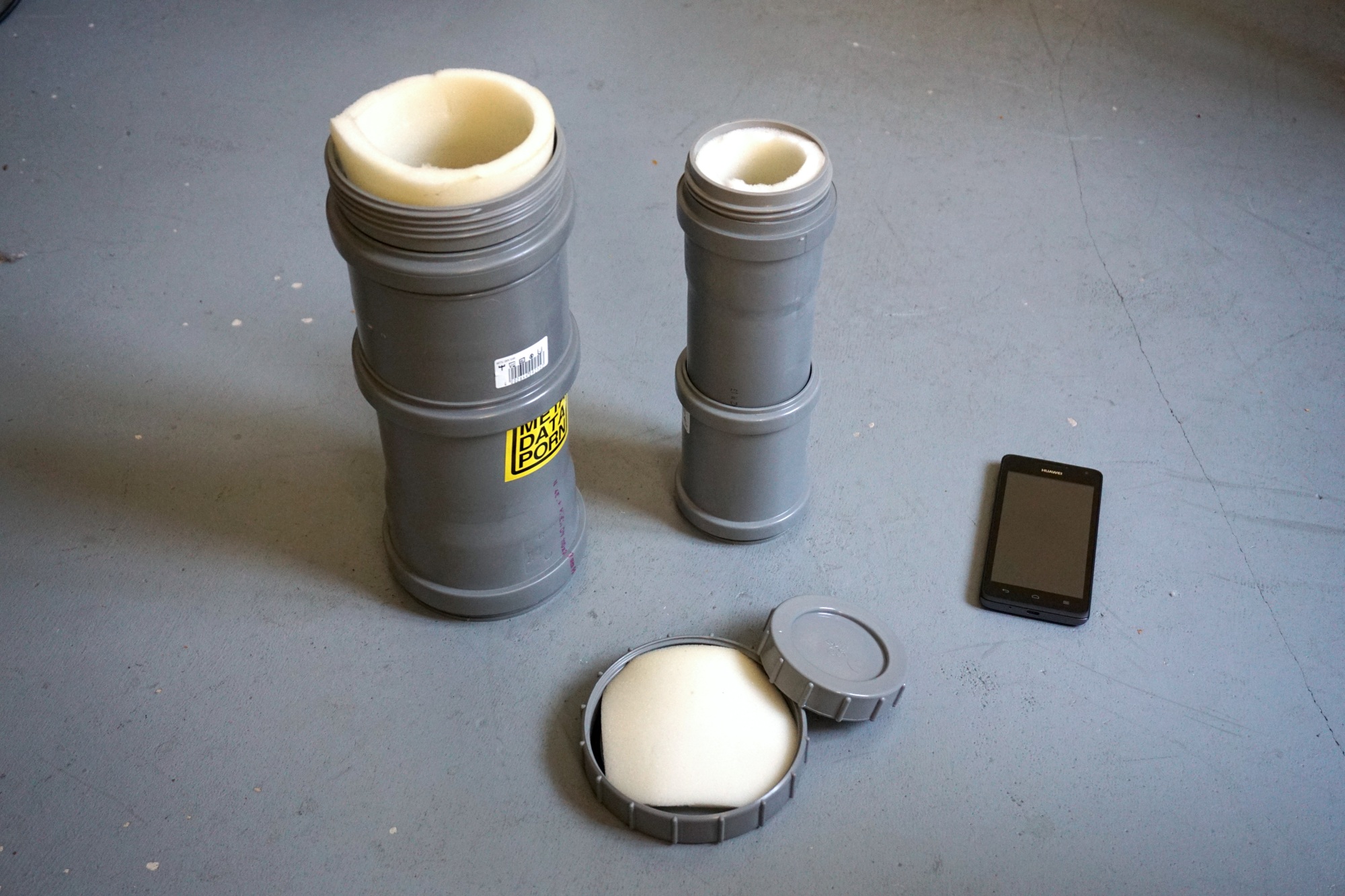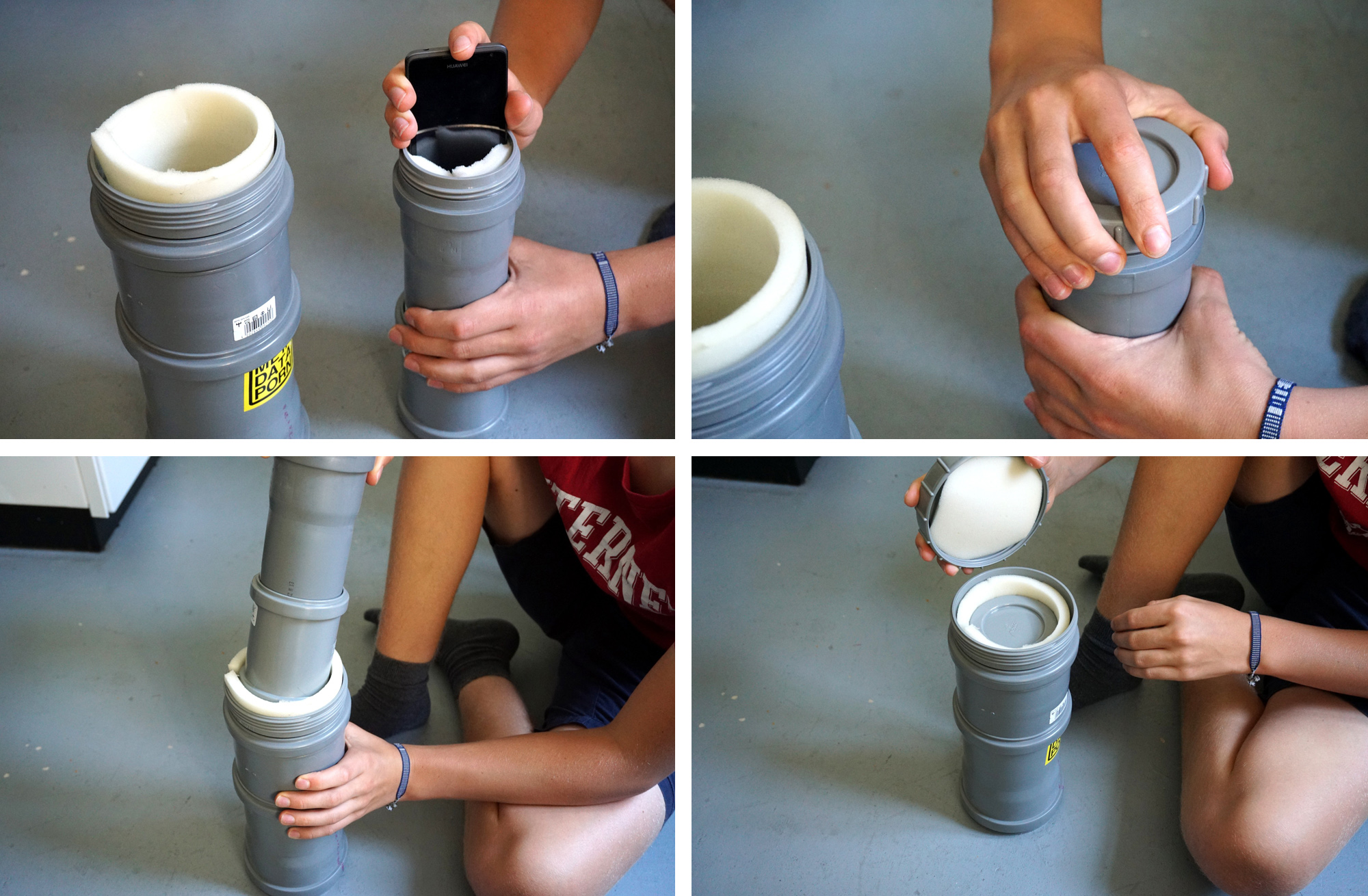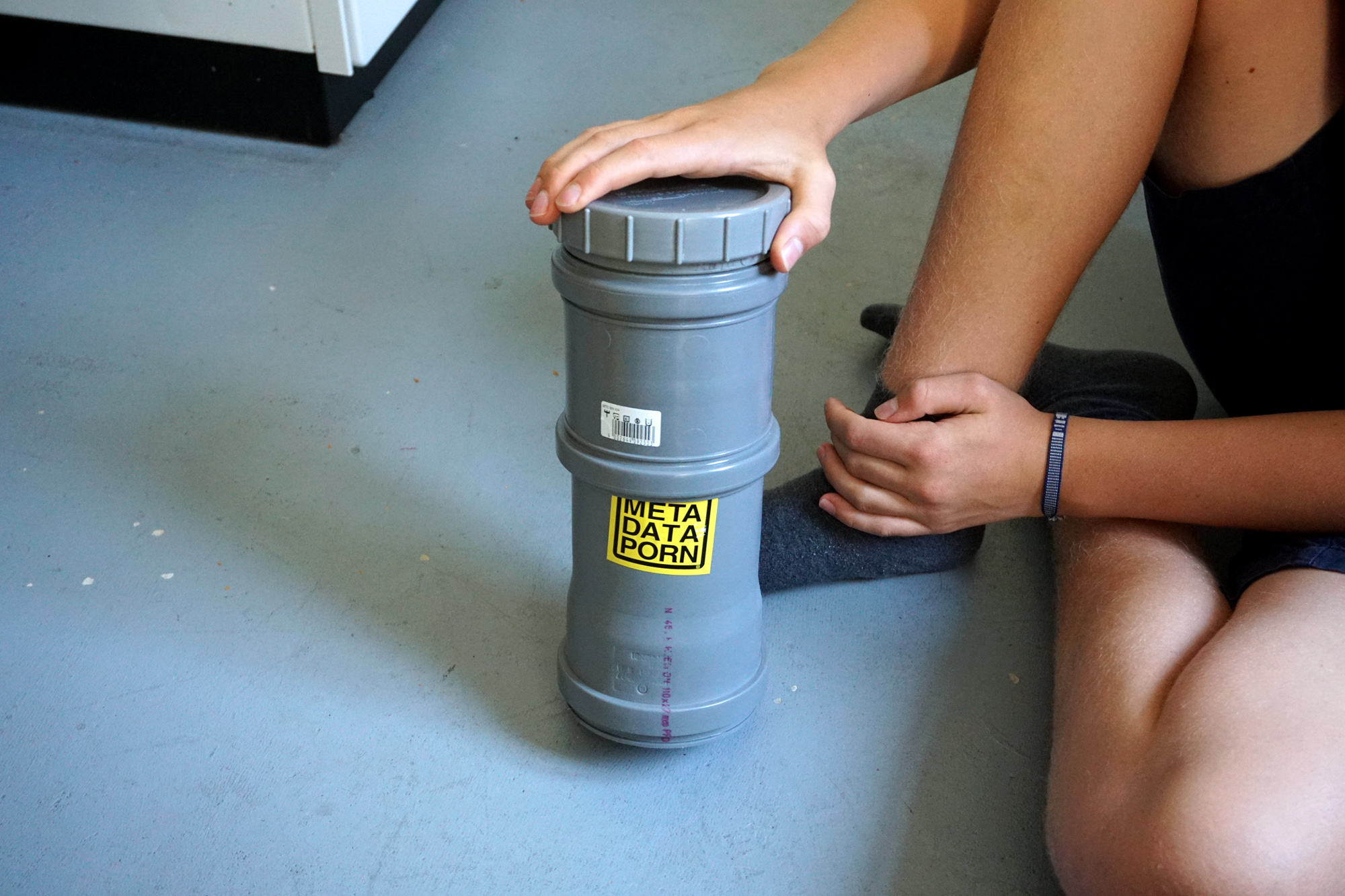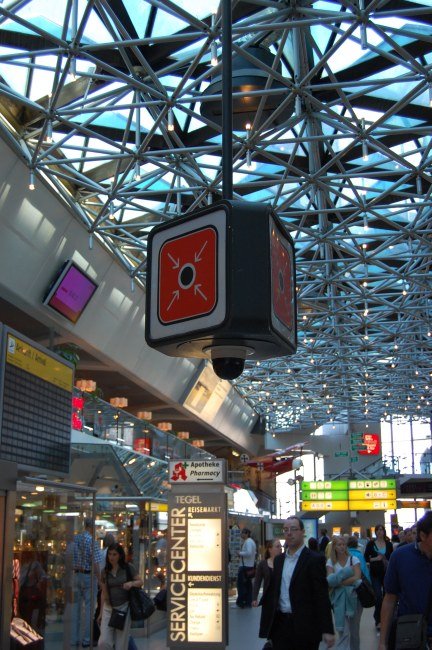'DeafenYourPhone' – How to make sure your phone is not listening on you
The ‚DeafenYourPhone‘ tube is a mobile, low-cost, DIY sound dampening solition to prevent supposedly hacked phones from eavesdropping on its owner.

The Matryoshka tube in a tube concept works well to isolate a phone sound proof from its environment.

To avoid impact sound transmission the tubes are isolated with foam. Add another tube if you want to increase the sound proofing quality.

Dimensions: 12 x 12 x 30 cm ; weight: 1 kg ; material cost: 24,- €
The problem
Once targeted a standard mobile phone can be hacked by an attacker and easily be modified to record sound at any time. This might sound like a farfetched spy story to you but in the year 3 after Snowden politicians, lawyers, NGOs or journalists have to deal very much with these kind of questions. Recently Edward Snowden & Bennie Huan presented the project „Introspection Engine“, a hardware modification for iPhones that monitors and signals radio traffic on a hardware level to make sure the phone is ‚really off‘. Different voices in the hacker community pointed out that this device cannot prevent phones from listen to a conversation and to relay the data ‚later‘ to the ‚attacker‘. It is generally advised for i.e. journalists who are meeting a ’source‘ to leave their phones ‚at home‘ or in a sound dampening closet like a fridge nearby. However, depending on the local situation this is not necessarily a practical solution. You might need the phone to plan the meeting and maybe the place where you meet has no fridge or similar appliances accessible.
How does it work?
Like a russian Matryoshka doll the phone is locked into a foam isolated plastic tube with screw cover, which again is placed in an isolated plastic tube. After a series of tests with different containers it showed that a round tube of hard plastic provides good properties to block sound. It is very important to disrupt direct contact of the phone case and plastic tubes to avoid impact sound transmission. The double layer tube in a tube approach can be improved with a 3rd or more layers of plastic tubes. Surprisingly it is quite difficult to prevent a phone microphone from ‚hearing‘ something. Try it yourself! I did tests with pouches, boxes, kitchen containers, glass containers, pelican cases and so on. Often there the recorded sound is already very low but always good enough to listen to a conversation once you pull up the volume in post-production audio software. Heavy high density material would work best to block sound waves but to walk around with a concrete block seems not very practical. However if you find out other better solutions please share your ideas!
Tutorial:
- Get different size plastic drain tubes and covers with rubber seals from your local DIY store. Screw covers are advised but sometimes harder to get. In german the grey tubes are called ‚HT-Rohr‚
- Buy some foam. I used just 10 mm standard foam but there is also special foam for sound canceling available i.e. in the auto mobile market available. Total cost of tubes and foam ca 24,- €
- Place the phone in the isolated tube and close the cover tight. Make sure the phone cover is not touching the tube directly. Place the small tube in the big tube and also close this one tight.
( The small tube I got only has diameter of only 7,5 cm. Small size smart phones still fit in here. Any new iPhone or Samsung will need a bigger tube. )
Disclaimer!
Make sure to test your setup! Put your phone to record audio and lock it in the tubes. Try different sound sources in a variety of distances to the DeafenYourPhone tube and check the results in audio software on your computer. In a normal medium sound environment, with a distance of 1-2 meters and normal voice speaking level I wasn’t able to extract any usable audio from the recordings. Only rely on this proposal for a sound proofing capsule if you have tested and proofed its function properly. Tips and recommendations from audio/eavesdropping experts are welcome! 😉
History
I presented this sound proof tube concept along with the killyourphone.com pouches workshop end of 2013 at the #30C3 conference, the annual congress of the CCC (Chaos Computer Club) but haven’t documented it properly since then. This blog post is dedicated to Linus Neumann and Tim Pritlove from Logbuch Netzpolitik.org. ;))
Audio test!!
This is an audio test with the above shown setup. „Logbuch Netzpolitik“ #190 is running at a decent volume (normal voice level). The tubes are closed and then placed ca. 1m away from the speaker. If you are able to extract the conversation of Tim and Linus while the phone (iPhone 5) is in the tube please let me know!
